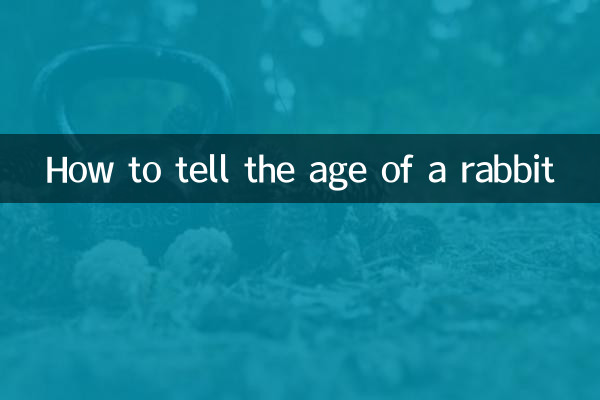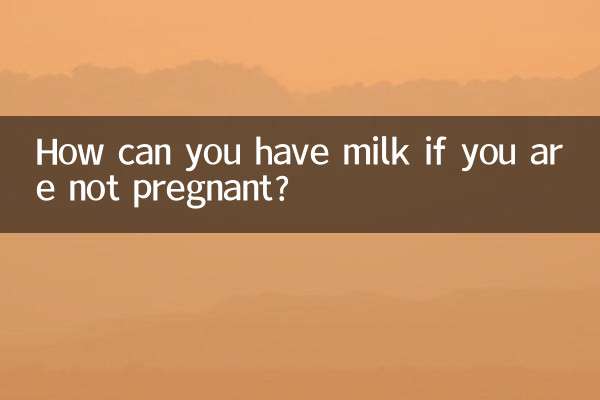How to tell the age of a rabbit: full analysis from teeth, behavior to scientific identification
In recent years, pet rabbits have become a new member of more and more families, but how to accurately determine the age of a rabbit confuses many novice owners. This article will combine the popular rabbit raising topics on the Internet in the past 10 days, analyze the methods of judging rabbit age from multiple dimensions such as teeth, hair, and behavior, and provide structured data for reference.
1. Dental status: core indicator for age judgment

The growth and wear of a rabbit's teeth are an important basis for judging age. The deciduous teeth of young rabbits will fall out in about 3 weeks, and the permanent teeth will gradually turn yellow and wear out with age. The following are the characteristics of teeth at different stages:
| age stage | dental characteristics |
|---|---|
| Baby rabbit (0-3 months) | The deciduous teeth are small and white, and the incisors are sharp and unworn. |
| Young Rabbit (3-12 months) | Permanent teeth are neat, slightly yellowed, and have no significant wear. |
| Adult rabbit (1-5 years old) | Teeth are noticeably yellowed and may have grinding or chipping |
| Elderly rabbits (over 5 years old) | The teeth are severely worn, partially fallen off, and are dark yellow or brown in color. |
2. Hair and body shape: auxiliary judgment basis
The hair of young rabbits is soft and fluffy, the hair of adult rabbits is thick and shiny, while the hair of older rabbits may be sparse and rough. In terms of body shape, the bones of rabbits under 6 months old are not fully developed and their heads are proportionally larger.
| age | hair characteristics | Physical characteristics |
|---|---|---|
| 0-6 months | The lanugo is soft and the hair is messy during the molting period. | The head-to-body ratio is 1:1, and the limbs are short. |
| 6 months-3 years old | Hair is smooth, thick and bright in color | Well-proportioned body shape and tight muscles |
| 3 years and above | Partial hair turns white and gloss decreases | Possibility of obesity or weight loss |
3. Behavioral characteristics: “dynamic indicators” of age
Young rabbits are active and curious about new things; middle-aged rabbits have stable behavior; old rabbits have reduced activity and prolonged sleep time. In a recent hot search, a case shared by netizen "Tutu Butler" showed that his 5-year-old rabbit slept for 16 hours a day, which was much higher than the 8-10 hours of young rabbits.
4. Scientific identification methods
If it cannot be judged by appearance, the following scientific methods can be considered:
1.Bone age detection: Observe the degree of bone healing through X-ray, the error is about ±3 months.
2.DNA methylation detection: Emerging technology, the accuracy can reach more than 90%, but the cost is high.
5. Common Misunderstandings
1. The misconception that “bigger body = older age” is actually related to the breed (for example, a giant rabbit has reached an adult size at 1 year old).
2. Ignore the impact of diet on teeth. Long-term soft food will delay tooth wear.
In summary, judging the age of a rabbit requires a combination of multiple indicators, and it is recommended to combine it with a professional veterinary assessment. Scientific feeding and regular physical examinations can help rabbits live longer and healthier!

check the details

check the details